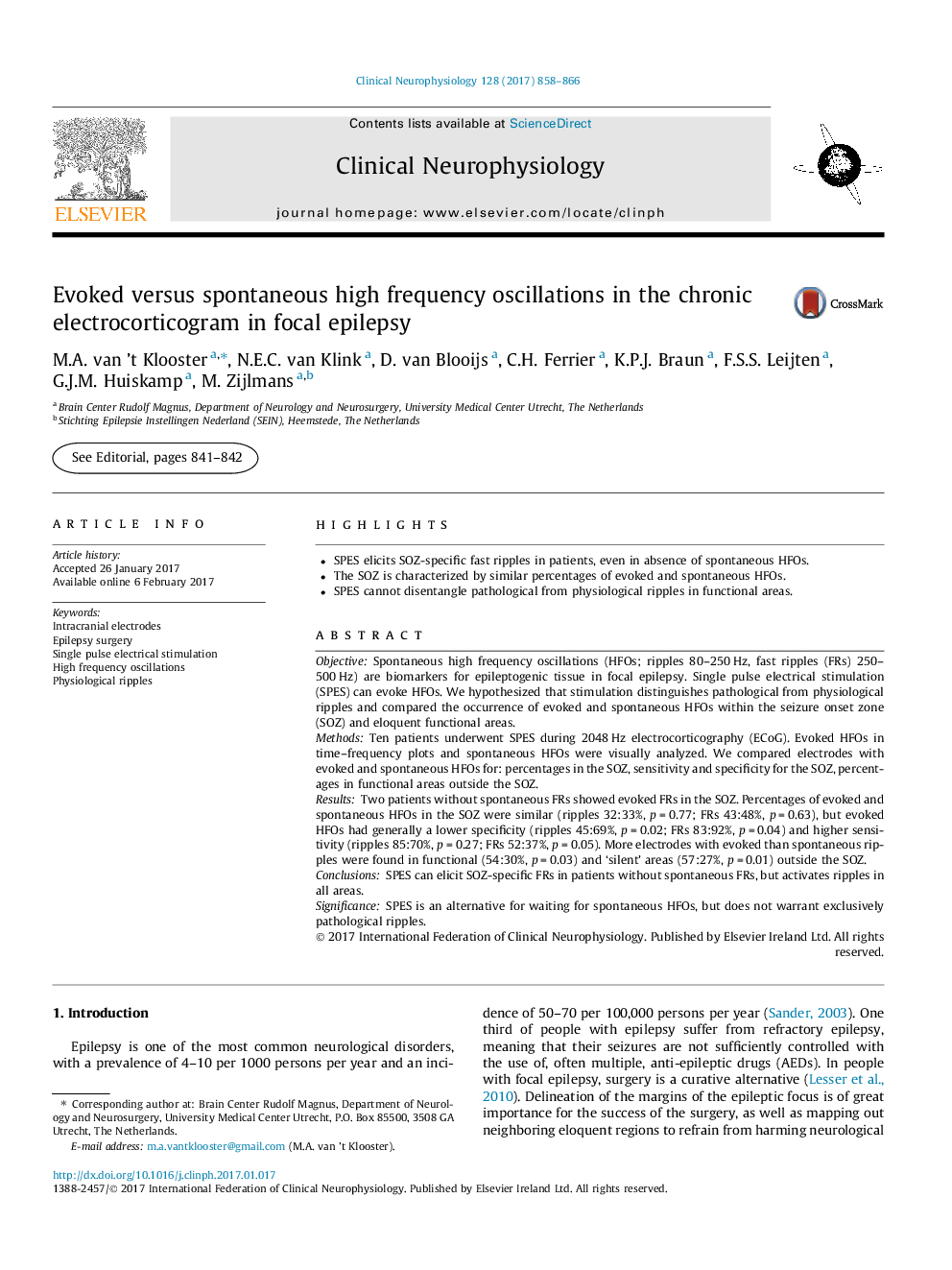| Article ID | Journal | Published Year | Pages | File Type |
|---|---|---|---|---|
| 5627667 | Clinical Neurophysiology | 2017 | 9 Pages |
â¢SPES elicits SOZ-specific fast ripples in patients, even in absence of spontaneous HFOs.â¢The SOZ is characterized by similar percentages of evoked and spontaneous HFOs.â¢SPES cannot disentangle pathological from physiological ripples in functional areas.
ObjectiveSpontaneous high frequency oscillations (HFOs; ripples 80-250 Hz, fast ripples (FRs) 250-500 Hz) are biomarkers for epileptogenic tissue in focal epilepsy. Single pulse electrical stimulation (SPES) can evoke HFOs. We hypothesized that stimulation distinguishes pathological from physiological ripples and compared the occurrence of evoked and spontaneous HFOs within the seizure onset zone (SOZ) and eloquent functional areas.MethodsTen patients underwent SPES during 2048 Hz electrocorticography (ECoG). Evoked HFOs in time-frequency plots and spontaneous HFOs were visually analyzed. We compared electrodes with evoked and spontaneous HFOs for: percentages in the SOZ, sensitivity and specificity for the SOZ, percentages in functional areas outside the SOZ.ResultsTwo patients without spontaneous FRs showed evoked FRs in the SOZ. Percentages of evoked and spontaneous HFOs in the SOZ were similar (ripples 32:33%, p = 0.77; FRs 43:48%, p = 0.63), but evoked HFOs had generally a lower specificity (ripples 45:69%, p = 0.02; FRs 83:92%, p = 0.04) and higher sensitivity (ripples 85:70%, p = 0.27; FRs 52:37%, p = 0.05). More electrodes with evoked than spontaneous ripples were found in functional (54:30%, p = 0.03) and 'silent' areas (57:27%, p = 0.01) outside the SOZ.ConclusionsSPES can elicit SOZ-specific FRs in patients without spontaneous FRs, but activates ripples in all areas.SignificanceSPES is an alternative for waiting for spontaneous HFOs, but does not warrant exclusively pathological ripples.
